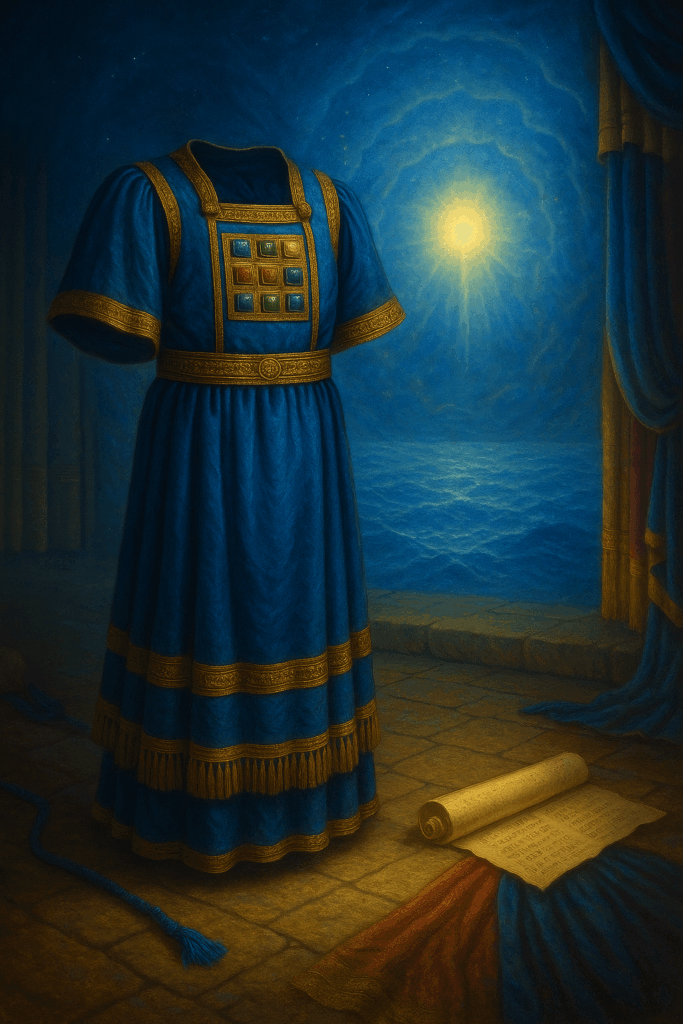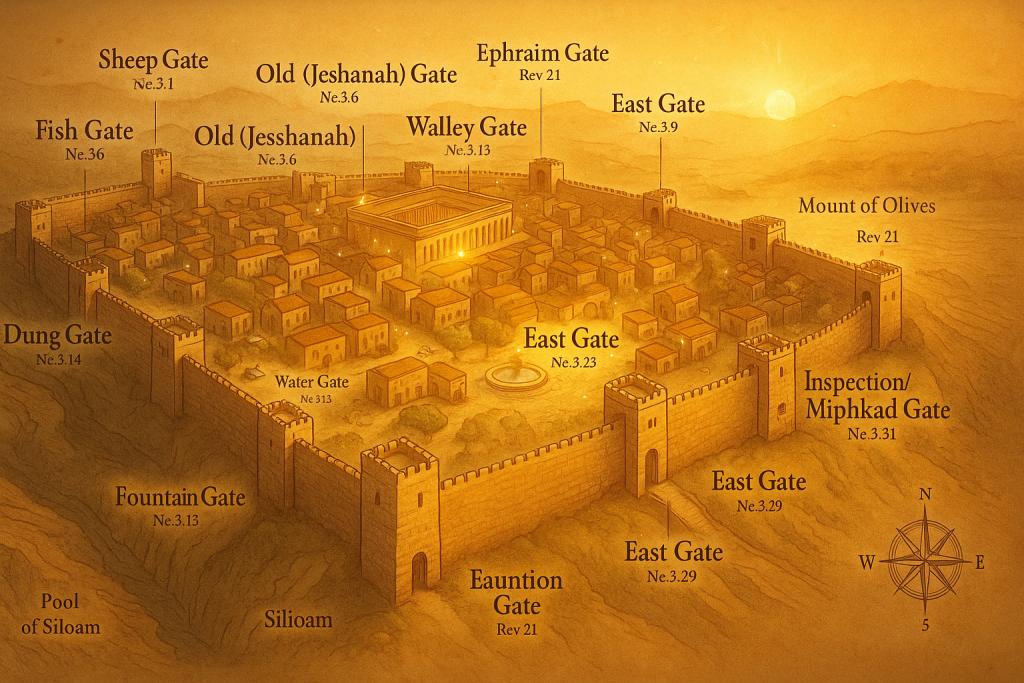The biblical meaning color blue has long captured the attention of readers who want to understand how this shade reflects God’s character, presence, and purpose throughout Scripture. Rather than appearing as a simple visual detail, blue consistently points to something higher heaven, holiness, and the nearness of the divine. From the priestly garments crafted in the book of Exodus to the vivid prophetic visions recorded by Ezekiel, this color carries layers of spiritual depth that help us grasp how God communicates through symbols.

In the ancient Hebrew tradition, colors served as powerful teaching tools. Blue, in particular, was used to draw the people’s eyes upward, reminding them of God’s commandments and the covenant that shaped their identity. These early references provide the foundation for understanding what does the color blue represent in the bible, a question that continues to inspire curiosity among believers and seekers who explore biblical symbolism today.
As we begin this study, the goal is to illuminate how blue operates as more than a visual accent. It functions as a bridge between earthly life and heavenly truth. Throughout the article, each reference to this color will reveal its significance in worship, spiritual identity, and the way Scripture teaches us to keep our hearts aligned with God. Exploring these meanings opens a deeper appreciation for how the Bible uses colors to communicate messages that remain relevant across generations.
Read also our article about: Biblical Meaning of Big Waves in Dreams.
What Does the Color Blue Represent in the Bible
Understanding what does the color blue represent in the Bible helps reveal how this shade conveys spiritual truths woven throughout Scripture. In many passages, blue is directly linked to the heavens, symbolizing God’s dwelling place and the divine realm that transcends human experience. This connection appears clearly in the visions of Ezekiel, where the prophet describes scenes filled with radiant, sky-like tones that emphasize God’s majesty and authority. Because of this association, blue naturally became a visual reminder of God’s sovereignty and the call to live with eyes fixed on Him.
Blue is also connected to holiness and sacred responsibility. In Exodus, God commands that the high priest’s garments include blue fabric, highlighting purity, consecration, and the unique role of those who served in His presence. Likewise, in Numbers 15, the Israelites receive the instruction to place a blue cord on the fringes of their garments. This small detail was intended to help them remember the commandments and remain faithful to their covenant with God an everyday reminder of the biblical meaning color blue.
Another layer of meaning emerges through the way blue symbolizes fidelity and spiritual integrity. Because the sky is steady and unchanging, ancient readers viewed blue as a sign of constancy. In this sense, the color communicates reliability and encourages believers to reflect the same steady commitment in their walk with God.
Altogether, blue operates as a symbol that draws attention upward toward heaven, holiness, and the enduring faithfulness of God. By grasping these layers, we gain clarity on how this color enriches the biblical narrative and deepens our understanding of spiritual identity.
Blue as a Symbol of the Divine Presence and Heavenly Reality
Throughout Scripture, blue consistently appears as a visual echo of God’s nearness. This connection becomes especially clear when we examine prophetic and worship-related passages that highlight the heavenly dimensions of the biblical meaning color blue. In these contexts, blue does not function merely as decoration; it signals an encounter with something sacred, transcendent, and profoundly real.
One of the most striking examples comes from Exodus 24, where Moses and the elders of Israel see a pavement beneath God’s feet described as “something like a sapphire stone, clear as the sky itself.” This imagery blends the deep blue of precious stone with the boundless expanse of the heavens, creating a vivid picture of divine glory. The color becomes a bridge between human perception and the unseen world, offering a glimpse of what does the color blue represent in the bible within moments of direct revelation.
The prophetic visions of Ezekiel reinforce this theme. His descriptions of the throne of God shimmer with sky-colored brilliance, emphasizing the overwhelming majesty of the One who rules above all creation. Blue, in this sense, not only symbolizes the heavens but also serves as a reminder that the spiritual realm is both present and active, even when invisible to the human eye.
This heavenly symbolism shaped Israel’s worship practices as well. The tabernacle, designed according to divine instruction, contained fabrics and coverings woven with blue threads, reminding the people that when they entered this sacred space, they stepped into a representation of God’s dwelling place. The color invited them to recognize that true worship is a meeting point between earth and heaven.
By understanding these layers of meaning, readers can see how blue functions as a spiritual marker, guiding believers toward a deeper awareness of God’s presence. When viewed from this perspective, blue becomes more than a color it becomes a window into divine reality, reinforcing the transcendent nature of faith and the beauty of God’s revelation.
Blue in Priestly Garments, Worship, and Covenant Reminders
The use of blue in the worship practices of Israel reveals how deeply this color shaped spiritual identity. In the priestly system established in Exodus, God instructed that the garments of the high priest include rich blue fabric, marking those who served in the sanctuary as set apart for holy work. This detail was not ornamental. It carried meaning rooted in the biblical meaning color blue, signaling purity, reverence, and the responsibility of ministering before the divine presence.
The book of Exodus describes the ephod, robe, and decorative elements of the priestly attire as carefully crafted with blue threads. These garments created a visual reminder of heaven’s nearness each time the priest entered the tabernacle. The blue tones represented a connection between worship on earth and God’s dwelling above, helping the people understand what does the color blue represent in the bible within the context of sacred service.
This symbolism extends even further in the command found in Numbers 15:38 40, where the Israelites are told to place a blue cord on the fringes of their garments. This instruction served a specific purpose: to help the people remember the commandments and live faithfully under the covenant they had embraced. Each time they saw the blue thread, they were reminded of God’s laws and their commitment to walk in obedience.
Blue thus functioned as a teaching tool, shaping both personal devotion and communal worship. Whether woven into priestly garments or tied into everyday clothing, its presence signaled the call to holiness and the importance of remembering God’s guidelines for life. These uses demonstrate how a single color could reinforce spiritual identity and keep the hearts of the people centered on their covenant with the Lord.
Read also our article about: What Does the Number 49 Mean.
Spiritual Lessons of the Color Blue for Today’s Faith Journey
The symbolic depth found in the biblical meaning color blue offers timeless lessons for those seeking to strengthen their faith today. While the ancient world used this color in garments, worship, and covenant reminders, its message continues to resonate in modern spiritual life. Blue points us toward truths that remain relevant for anyone who desires a deeper connection with God and a clearer understanding of what does the color blue represent in the bible.
One of the most enduring lessons is the call to look upward. Blue, often tied to the sky and the heavenly realm, encourages believers to maintain a perspective grounded not only in earthly responsibilities but also in spiritual realities. This upward focus fosters trust during difficult seasons and reminds us that God’s presence is constant, even when circumstances shift.
Blue also teaches the importance of faithfulness. Just as the Israelites used a blue cord to remember God’s commandments, today’s believer can see this color as a prompt to live with integrity and commitment. Whether through spiritual disciplines, daily choices, or personal devotion, blue becomes a visual cue to remain steadfast in the path God has laid out.
Another meaningful application is found in the way blue connects worship on earth with the divine. Reflecting on its rich biblical symbolism can enrich personal prayer, helping individuals approach God with reverence and gratitude. The color inspires a mindset that seeks holiness not as perfection, but as a sincere desire to honor God in everyday life.
Ultimately, the spiritual lessons of blue remind us to blend remembrance, reverence, and hope as we walk our faith journey. By embracing this symbolism, readers can cultivate a deeper awareness of God’s presence and allow these biblical insights to shape their daily steps with purpose and clarity.


